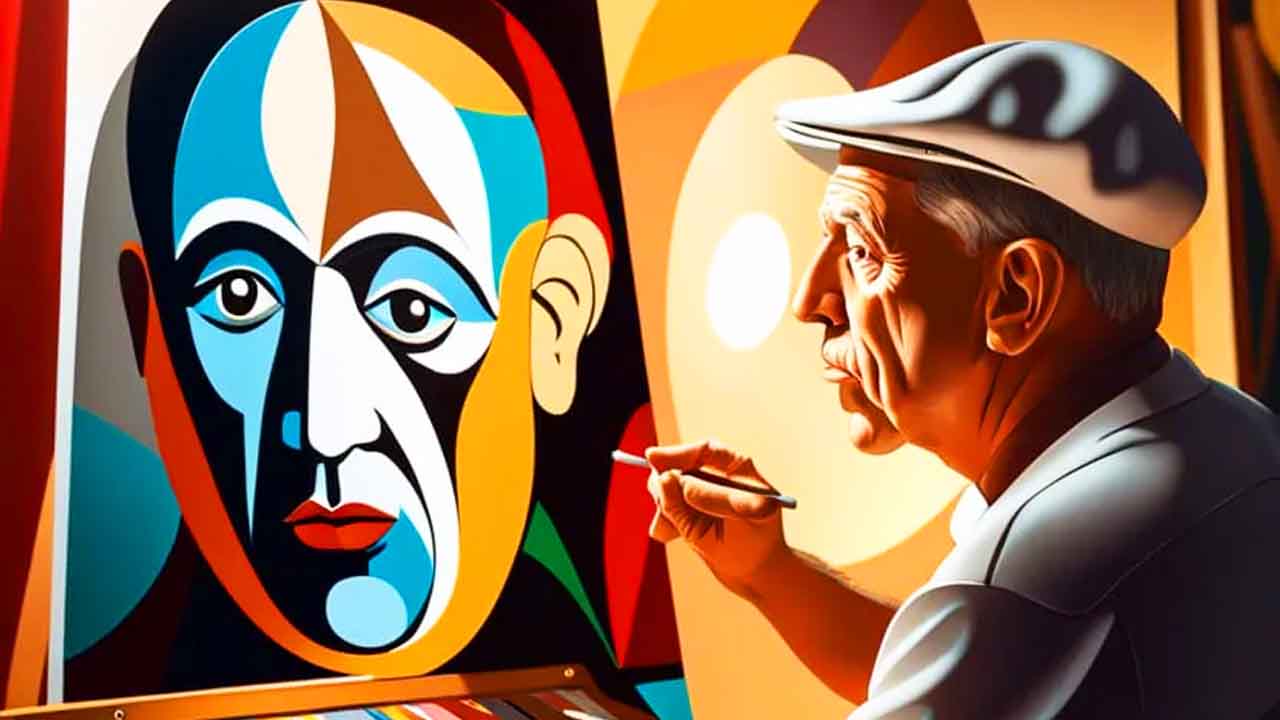Pablo Picasso, an artist who left a mark on the art scene of the century completely. He transformed painting, sculpture, printmaking and ceramics with his groundbreaking contributions. His involvement in co founding the Cubist movement. Picassos artistic range extends across Surrealism, Symbolism and Classicism showcasing his versatility and creative brilliance.
Early Years and the Blue Period of Picasso
Born on October 25 1881 in Málaga, Spain. Pablo Picasso exhibited talent from a very young age. His early works were characterized by their depth and a subdued color palette. This period culminated in what’s known as the Blue Period (1901 1904). During this period he predominantly created pieces using various shades of blue and blue green. These artworks often depicted individuals on the fringes of society who were struggling with destitution.
Rose Period and Art Inspired by Africa
After the Blue Period came to a close Picassos palette became more vibrant as he entered what is referred to as the Rose Period (1904 1906). During this phase he focused on portraying circus performers and clowns using hues like orange and pink. Following this period was his exploration of art influences (1907 1909). Inspired by artifacts he encountered at that time he went on to create “Les Demoiselles d’Avignon,” a groundbreaking painting considered to be a precursor, to Cubism.
Cubism and Beyond
Georges Braque Picasso and Cubism
With Georges Braque Picasso developed an artistic movement known as Cubism. This approach involved breaking down objects into shapes presenting perspectives simultaneously and questioning traditional ways of seeing. As Cubism progressed it transitioned from Analytic Cubism characterized by structures and subdued colors to Synthetic Cubism, which embraced forms, vibrant hues and the inclusion of collage elements.
Later Works and Political Involvement
In his years Picassos artistic style took on an expressive and colorful quality as he explored Surrealism and revisited classical themes. His political engagement also became evident through works like “Guernica” (1937) a response to the devastating bombing of Guernica during the Spanish Civil War. Through this artwork he sought to symbolize the horrors of war and convey the innocence of its victims.
Legacy and Influence of Pablo Picasso
Picassos immense productivity and constant experimentation pushed the boundaries of art itself while leaving an impact on artistic movements and fellow artists. His remarkable ability to continuously reinvent himself while tackling political, social and personal themes solidified his status as a figure within the art world.
Pablo Picassos legacy is defined by his commitment to innovation, across artistic disciplines. Not did his work transform the course of art but it also continues to inspire generations of artists and enthusiasts who appreciate art in all its forms.

